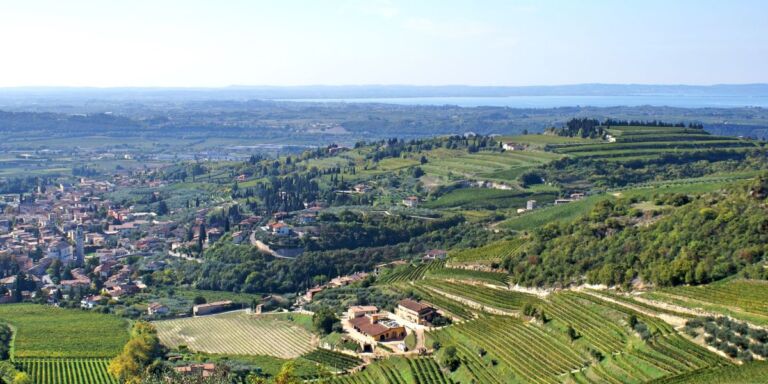We’re accustomed to seeing panoramic photographs of vineyards, all blue sky and green landscapes, documenting the wine world’s idyllic vistas. The more obsessed among us are equally familiar with up-close profiles of individual vines, charting their trellising, pruning and training systems. But aerial shots present a whole new perspective.
Take the above view of La Geria in the unheralded wine region of Lanzarote. Here, individual bush vines are planted into the arid black volcanic soil and then partly buried in layers of coarse but porous picón ash, which retain the night-time humidity to provide the requisite moisture to the vines. Low, semicircular walls are built around the exposed vines to protect the grapes – mostly Malvasía – from the wind. The result, viewed from overhead, could be a scene from another planet.
Here are four other spectacular overhead panoramas from right across the wine world…



renowned; those of France, a little less so; and situated between the pair, those of Luxembourg barely register in the global vinous consciousness. Yet here in the commune of Schengen, a patchwork of vineyards gives rise to an astonishing variety of styles: from sparkling crémant to an array of aromatic whites – Riesling, Pinot Blanc, Pinot Gris and Gewürztraminer – plus Pinot Noir; regional specialities such as Müller-Thurgau, Elbling and Auxerrois; and late-harvest ice wines and straw wines. Image credit: Alamy






